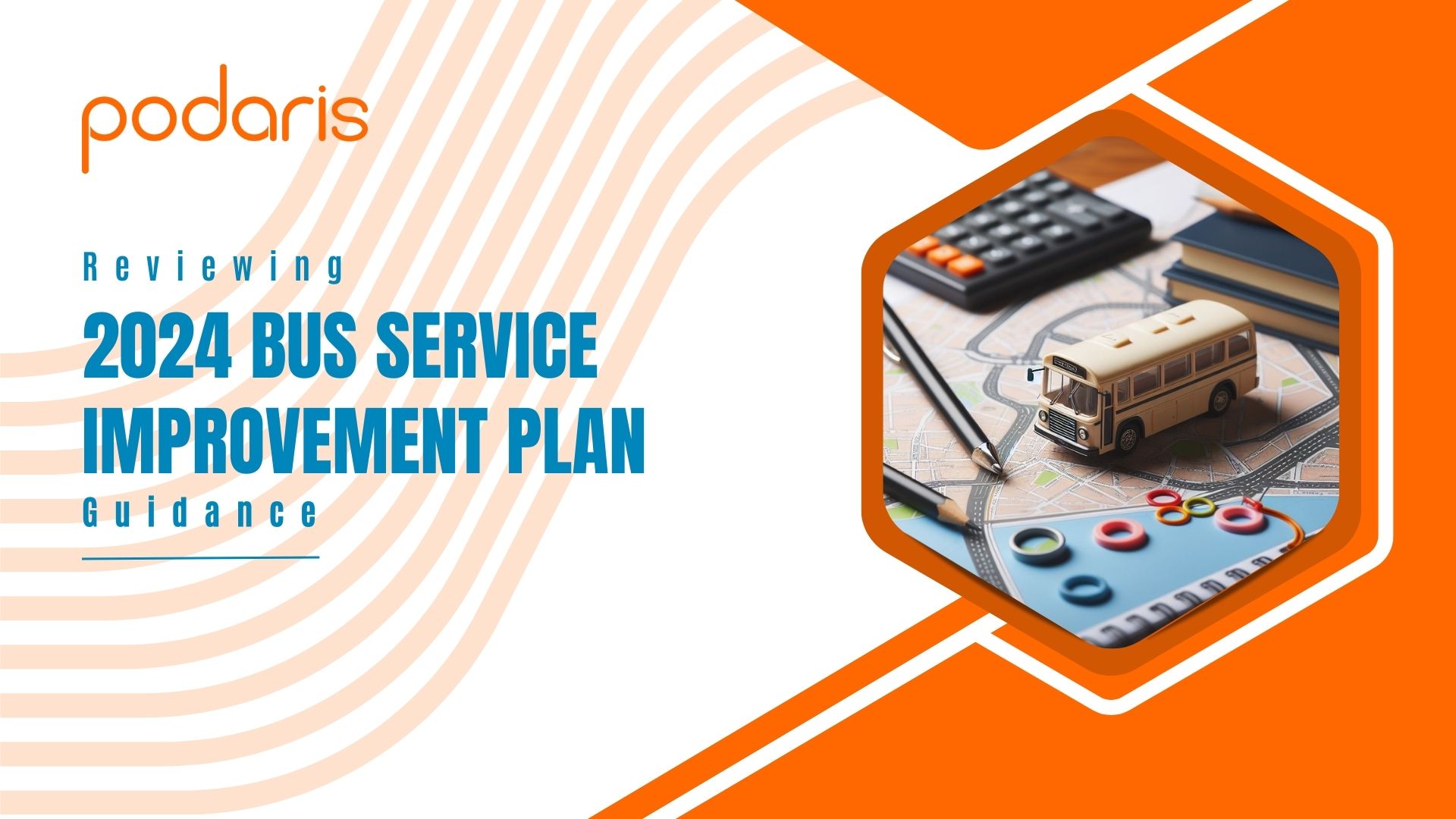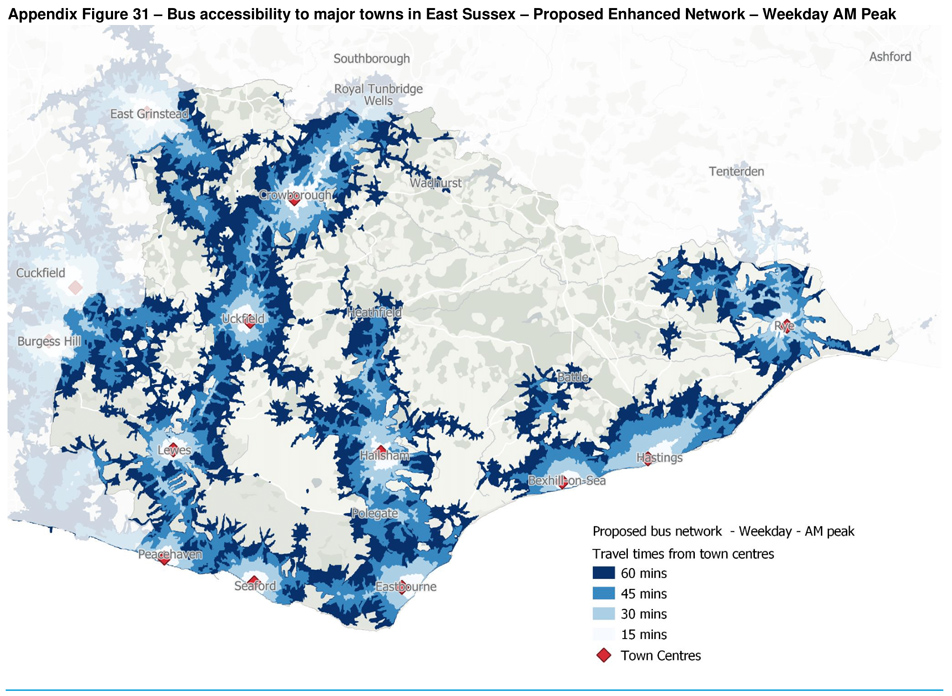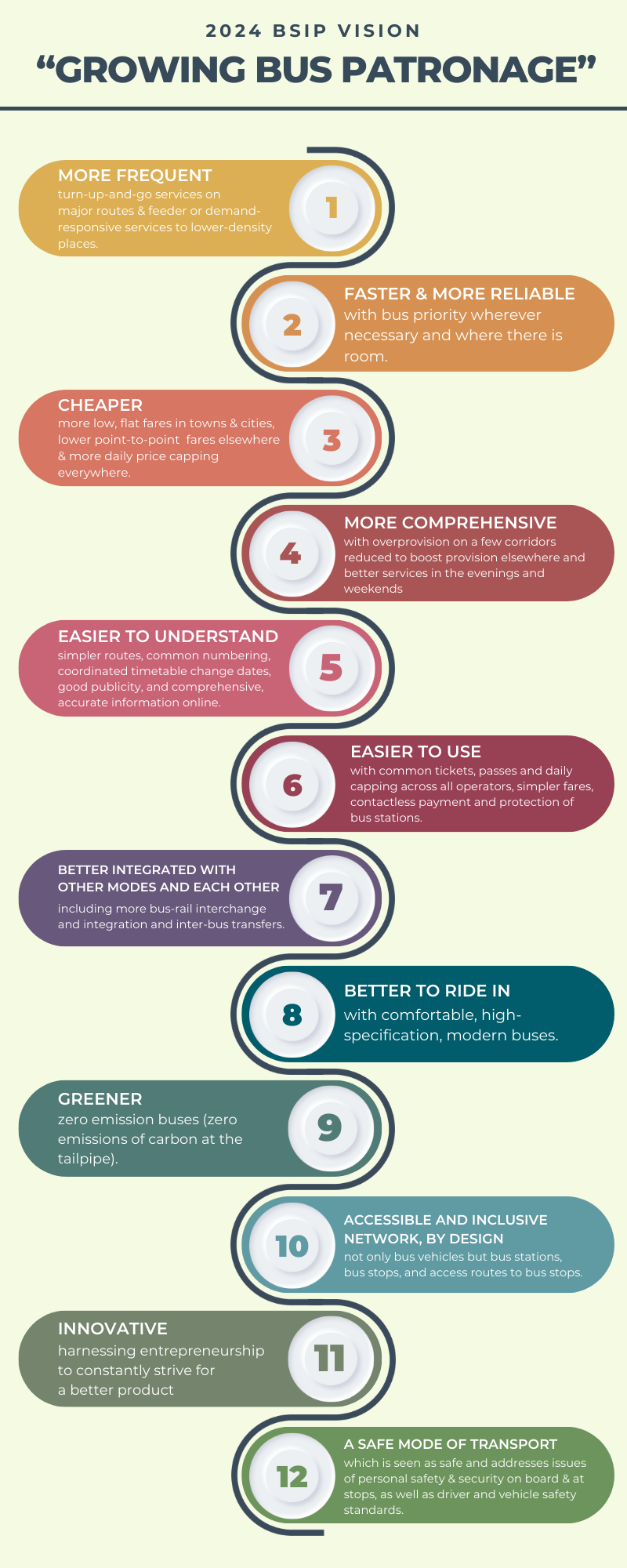
Within England, the National Bus Strategy, first published in 2021, remains the primary statement on the Government's ongoing vision for bus services outside of London. Described as “the most ambitious shake-up of the bus sector in a generation”, it seeks to reform the planning of bus services, grow patronage, and move beyond the purely commercial imperatives that had guided planning in the past.
At the heart of the strategy is a focus on collaboration, with Local Transport Authorities(LTAs), bus operators and local stakeholders expected to work together to produce Bus Service Improvement Plans (BSIPs), key documents outlining their vision for bus services that are attractive, convenient, good value and popular.
The development and submission of evidence-based, ambitious BSIPs to what had originally proved a challenging timeline (5 months from the issuance of guidance to final submission) was essential to securing the first phase of NBS funding. Ultimately, all LTAs successfully produced their BSIPs on time, although only 34 were awarded any funding from the £1.04bn made available, with allocations ranging from £2.6m to £163.5m.
During this time, Podaris proved invaluable to several LTAs developing their BSIPs, not least for its inherent collaborative capabilities. With Podaris, rapid editing of trip times using its built-in GTFS editor and visual tools for modelling the impact of route alterations on accessibility and travel time profoundly accelerated the development of BSIPs for LTAs who had previously used spreadsheets to perform their calculations. For Podaris customer East Sussex County Council, the software proved pivotal in successfully securing £41.4m in BSIP funding.
The image below, taken from the East Sussex BSIP, shows a Podaris produced isochrone analysis of a proposed bus network, depicting travel time to town centres.

Since the inception of the NBS, a series of supplementary funding packages (such as BSIP+) and fare schemes (such as the ongoing £2 fare cap) have launched to support bus growth in England. The Government has now moved to invite LTAs to update their BSIPs for 2024.
With BSIP+ (now dubbed BSIP Phase 2) and Phase 3 (rechanneled funding from the part-cancellation of HS2), all LTAs are now aware of their funding envelope for FY24/25. The 2024 BSIP is therefore not a bidding document but rather an opportunity to present a plan for future delivery and report on the current status of proposed bus service improvements.
The extent to which original BSIPs are restructured or shortened is at the discretion of the respective LTA.
The 2024 BSIP guidance
The recently published guidance for 2024 BSIPs suggests a somewhat modified structure to the 2021 version but maintains the mandate that the final document be both comprehensive yet concise, while also being accessible to the public, with a deadline for submission to the Department for Transport on June 12th, 2024.
The guidance is split into three key themes:
-
Updating the baseline to 2023/24 and accounting for all developments since 2021, with attention to progress made through Enhanced Partnerships (EPs) or franchising options (76 of 79 opted for EPs - see our previous blog post for a summary of the distinctions).
-
The 2024/25 improvement programme, taking into account all funding sources.
-
Proposals for the years 2025-29
A Proposed Structure
The guidance acknowledges that there was considerable variety in the original BSIP documents, both in length and content, and proposes a new structure for 2024 BSIPs, in six parts, as described below:
1. Our bus vision
In which the geographical area that the BSIP covers, along with a concise ‘vision’ are stated. The BSIP should be a subsidiary to Local Transport Plans (LTPs), and for brevity's sake, cross-reference them. It should reflect the overarching vision of the NBS, that is, to grow bus patronage. This breaks down into 12 components, as depicted in our infographic, below:

Podaris provides a suite of tools specifically designed to address the above key goals, including:
- The ability to plan enhancements based on changes to service frequency (or fleet size, and to then see the impact on frequency).
- Tools for quantifying the impact of bus priority lanes.
- Reducing overprovison with corridor frequency analysis tools to generate statistics such as average vehicle per hour and peak vehicle per hour on a given route segment.
- Journey planning and travel time/accessibility analysis tools that factor multiple modes (e.g. tram and rail), giving you a complete picture of multimodal connectedness.
2. Current offer to bus passengers
In which key metrics of bus performance are presented (including baseline spending of FY22-24), and describe the current state of alignment to the bus vision, and provide a record of change since 2021. Maps, charts and tables are suggested as an excellent means of conveying this information.
A table of fixed-route network services and DRT schemes should also go here.
3. Headline targets Improvements programme to 2024/25
Here, BSIP Phase 1 recipients should summarise progress of the delivery of their programme. LTAs should also set out their delivery programme until the end of 2025.
4. Delivery Ambitions and proposals for 2025-2030
Here, specific proposals for the fulfilment of the bus vision post April 2025 are itemised. A long term (at least 10 year) and more immediate term (4 year) view are to be stated here, with greater detail given to the latter.
The guidance offers a template for this section, which includes items such as bus network planning and improvements to services; bus priority; improvements to fleet, etc… Their structure is a proposal and not mandatory. LTAs may prefer to adopt a structure that better conforms to their LTPs.
5. Reporting Targets, performance monitoring and reporting
In which targets from the 2021 BSIP such as bus speed, punctuality and accessibility to services are reported, alongside a summary of monitoring evidence. There is some discussion here of the upcoming Bus Connectivity Assessments (BCAs), a complement to the BSIP, which, from spring 2024 will help measure bus connectivity objectives.
6. Overview Table DfT format BSIP Overview Table
A standalone table, acting as a ‘plan-on-a-page’ - an overview of the BSIP.
The guidance suggests that a further update to BSIPs will likely be required in 2025, but going forward, a less than yearly update will be required.
To discover how Podaris can help support the development of your bus service improvement plans with rapid, collaborative tools for multimodal planning and analysis in the cloud, schedule a one-on-one demo with us today.